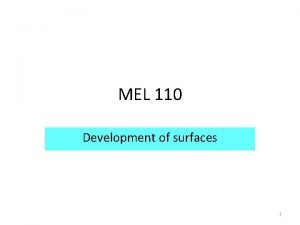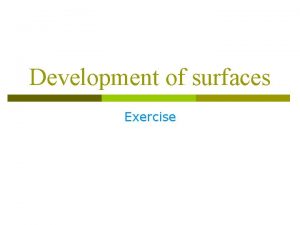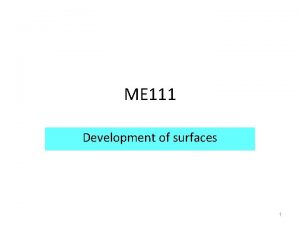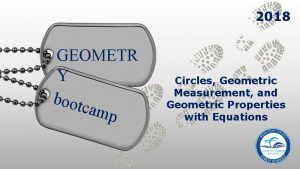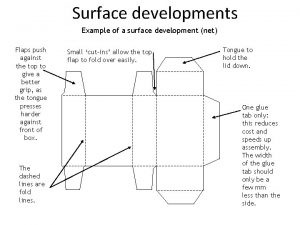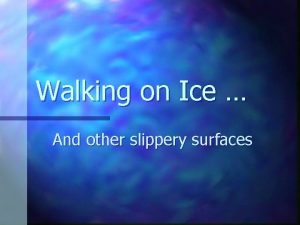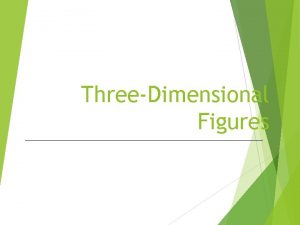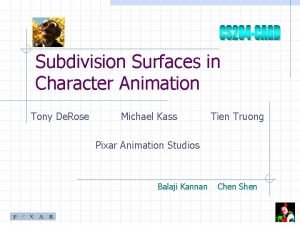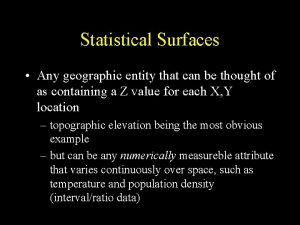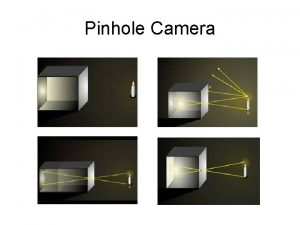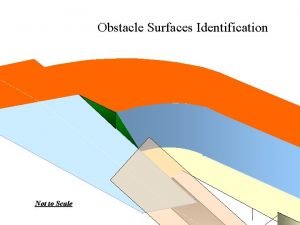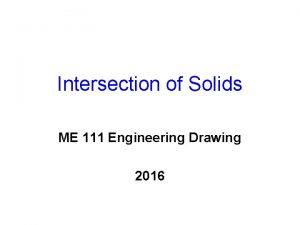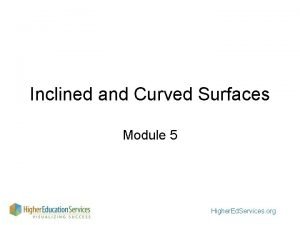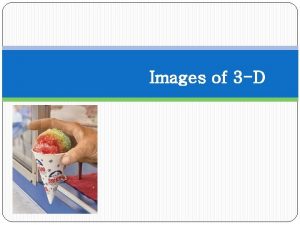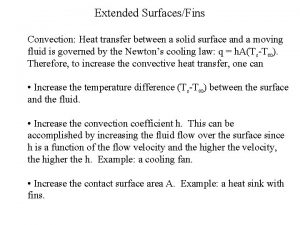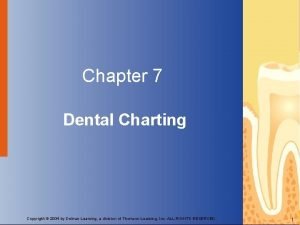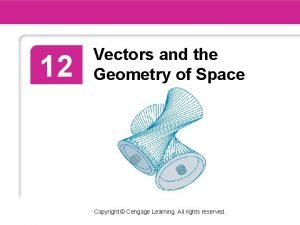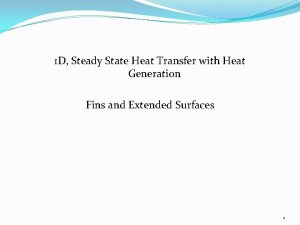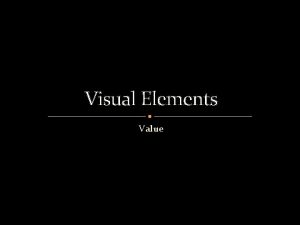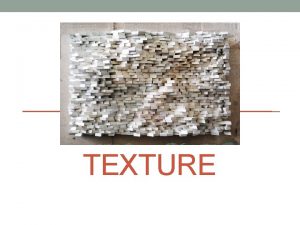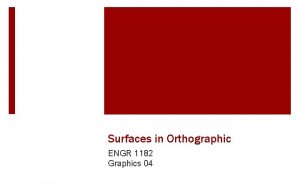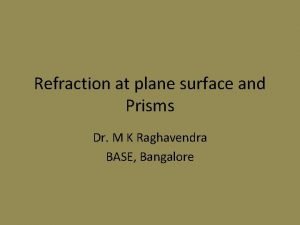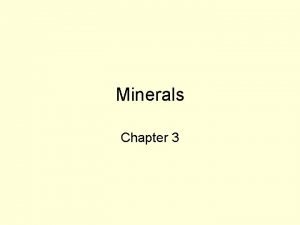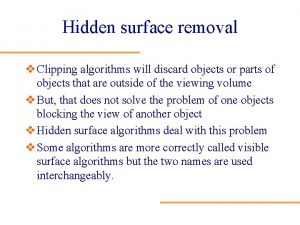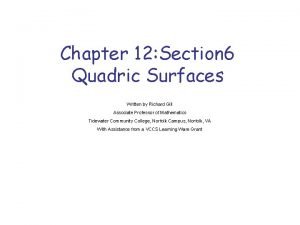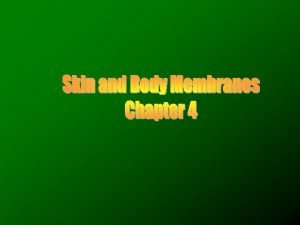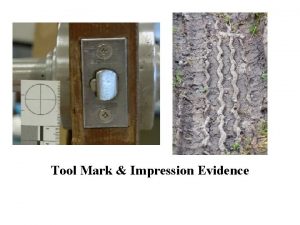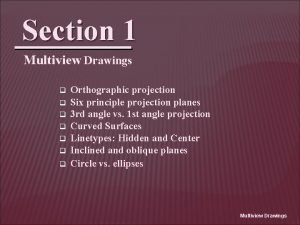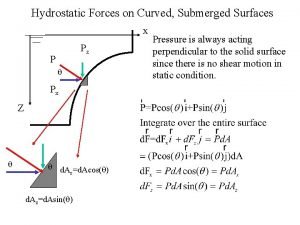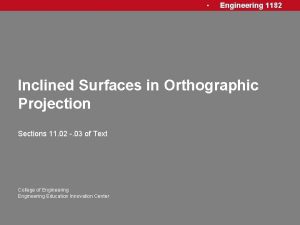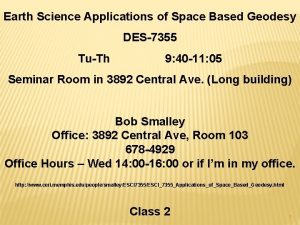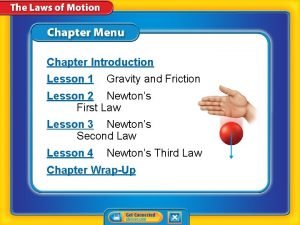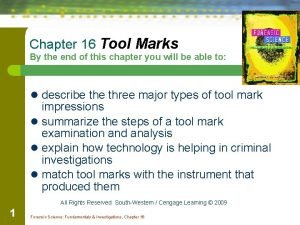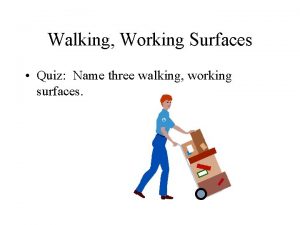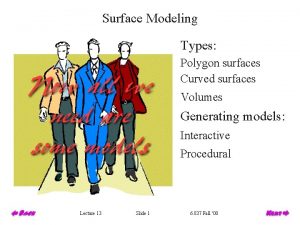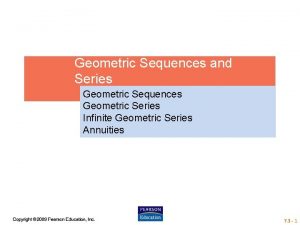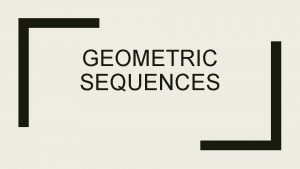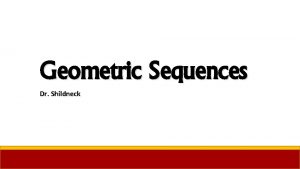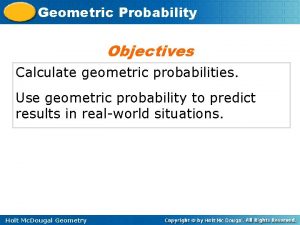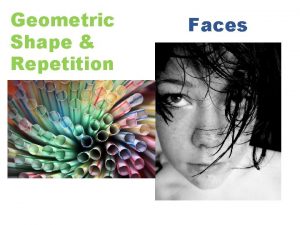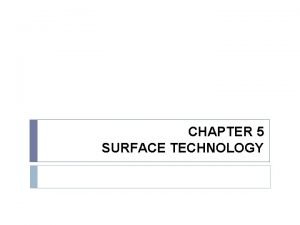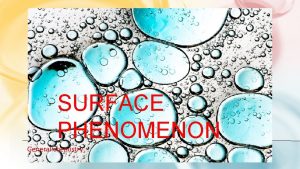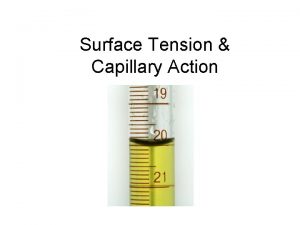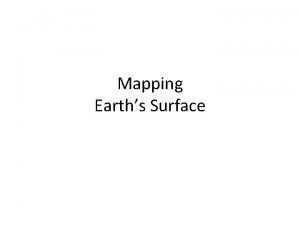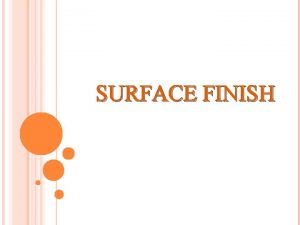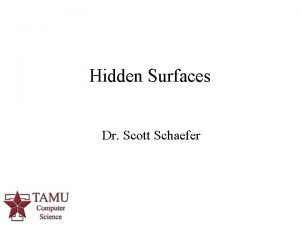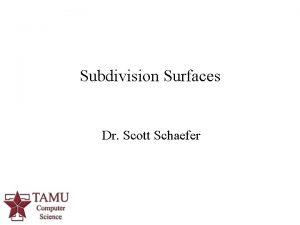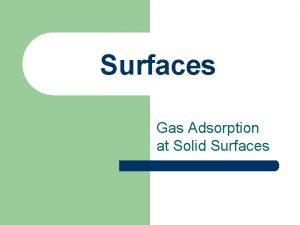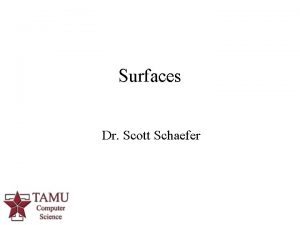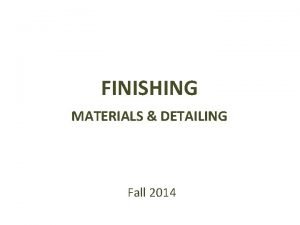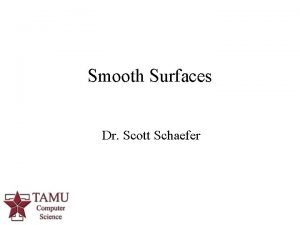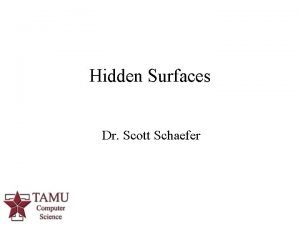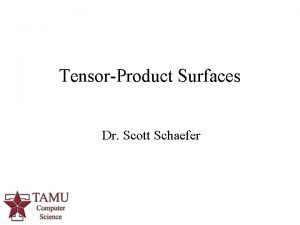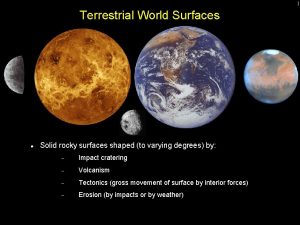Development of surfaces Geometric Surfaces A geometric surface
















































- Slides: 48

Development of surfaces

Geometric Surfaces • A geometric surface is generated by the motion of a geometric line, either straight or curved. 2 of 21

Geometric Surfaces • Surfaces that , are generated by a moving straight line are known as ruled surfaces, and those generated by a curved line are known as double-curved surfaces. Any position of the generating line, known as the generatrix, is called an element of the surface. 3 of 21

SURFACE DEFINITIONS • Ruled surfaces include planes, single curved surfaces and warped surfaces. • A plane is generated by a line moving in such a manner that one point on the line touches a straight line directrix as it moves parallel to its original posi tion. • A single-curved surface is generated by a straight line moving so that a point on the line touches a curved line directrix as it moves parallel to its origi nal position. 4 of 21

5 of 21

SURFACE DEFINITIONS • A double-curved surface is generated by a curved line moving in such a manner that one point on the line touches a curved line. • A warped surface is generated by a straight line moving so that it does not lie in the same plane in two adjacent positions. 6 of 21

7 of 21

Geometric Objects • Geometric objects (solids) are bounded by geometric surfaces. They may be classified as follows: 1. Solids bounded by plane surfaces: tetrahedron, prism, pyramid 2. Solids bounded by single curved surfaces: cone, cylinder 8 of 21

Geometric Objects 3. Solids bounded by double curved surfaces: sphere, spheroid, torus, paraboloid, hyperboloid 4. Solids bounded by warped surfaces: conoid, cylindroid, hyperbolic paraboloid, helicoid 9 of 21

DEVELOPMENTS • A layout of the complete surface of an object is called a development or pattern. • The layout of only the sides without the top or bottom is called the lateral surface. 10 of 21

Hexagonal Prism • Draw the lateral surface of a hexagonal prism side 50 mm and height 100 mm 11 of 21

Development of cylinder. 12 of 21

Cylinder • Exercise Draw the lateral surface of a Cylinder dia 50 mm and height 100 mm 13 of 21

Practical Developments • Many manufactured items can be made by rolling, folding, or pressing. These operations require the use of developed views. • A development should be drawn with the inside face up, as it theoretically would be if the surface were unrolled or unfolded. 14 of 21

15 of 21

Development of a Right-truncated Prism 16 of 21

Development of a Right truncated Prism • Draw development of the lateral surface of Right truncated Pentagonal Prism side 50 mm and height 100 mm cut in top by a plane inclined at 15 degrees passing thro top edge. 17 of 21

Development of oblique prism. 18 of 21

Development of right circular cylinder. 19 of 21

• Draw development of the lateral surface of Right truncated Cylinder dia 50 mm and height 100 mm cut in top by a plane inclined at 15 ° passing thro top end. 20 of 21

Prism approximation method for an oblique circular cylinder. 21 of 21

22 of 21

Principle of Development • Every line on the development should show the true length of the corresponding line on the surface which is developed. 23 of 21

Methods of development 1. 2. 3. 4. 24 of 21 Parallel – line development Radial – line development Triangulation development Approximate development

Parallel – line development • It is used for developing prisms and single curved surfaces like cylinders, in which all the edges/generators of lateral surfaces are parallel to each other. 25 of 21

Radial line method • It is employed for pyramids and single curved surfaces like cones in which the apex is taken as center and the slant edge or generator as radius for its development. 26 of 21

Triangulation development • It is used for developing transition pieces. 27 of 21

Approximate development • It is employed for double curved surfaces like spheres, as they are theoretically undevelopable. 28 of 21

29 of 21

Parallel Line Development Method 1. Draw the development of the lateral surface of a right square prism of edge of base 30 mm and axis 50 mm long. 30 of 21

31 of 21

STEPS: 1. Draw the top and front view of the prism and name the corners. 2. It consists of four equal rectangles of size 50 mm X 30 mm in contact and in sequence. Hence draw the rectangle A 1 A 1 AA such that A 1 A 1 = perimeter of the base of the prism and AA 1 = its height 3. On the line A 1 A 1, mark four equal divisions A 1 B 1, B 1 C 1, etc. , each equal to the side of base 30 mm. 4. Erect perpendiculars at B 1, C 1, and D 1. Darken the four rectangles which give the development of the lateral surface of the prism. 32 of 21

SOLUTION 33 of 21

Prob 2: • Draw the development of the outside case and tray of a match-box of size 45 mm X 33 mm X 16 mm. 34 of 21

35 of 21

Prob 3: Draw the development of the complete surface of a G. I. cylindrical drum with lid. Diameter is 30 cm and the height is 1. 6 times the diameter. 36 of 21

37 of 21

Prob 4: Develop the complete surface of a cube of 35 mm side. 38 of 21

Prob 5: Develop the lateral surface of a pentagonal prism of side of base 25 mm and height 50 mm. 39 of 21

Prob 6: A hexagonal prism, edge of base 20 mm and axis 50 mm long, rests with its base on H. P. Such that one of its rectangular faces is parallel to V. P. it is cut by a plane perpendicular to V. P. , inclined at 450 to H. P and passing through the right corner of the top face of the prism. Draw the sectional top view and develop the lateral surface of the truncated prism. 40 of 21

Prob 6: 41 of 21

Prob 7: • A vertical chimney of 70 cm diameter joins a roof sloping at an angle of 350 with the horizontal. The shortest portion over the roof is 32 cm. Determine the shape of the sheet metal from which chimney can be fabricated. 42 of 21

43 of 21

Prob 8 • Draw the development of the lateral surface of a square pyramid, side of base 25 mm and height 50 mm, resting with its base on H. P. and an edge of the base parallel to V. P. 44 of 21

45 of 21

Prob 9 • A pentagonal pyramid , side of base 30 mm and height 52 mm, stands with its base on H. P. and an edge of the base is parallel to V. P. it is cut by a plane perpendicular to V. P. , inclined at 400 to H. P. and passing through a point on the axis, 32 mm above the base. Draw the sectional top view and develop the lateral surface of the truncated pyramid. 46 of 21

47 of 21

48 of 21
 Development of lateral surfaces
Development of lateral surfaces Development of surfaces
Development of surfaces Methods of development of surfaces
Methods of development of surfaces Geometry bootcamp answers
Geometry bootcamp answers Lateral area formula for rectangular prism
Lateral area formula for rectangular prism High surface tension vs low surface tension
High surface tension vs low surface tension Curved surface area and total surface area of cone
Curved surface area and total surface area of cone Development of a cylinder
Development of a cylinder Surface developments
Surface developments Walking on slippery surfaces
Walking on slippery surfaces Square based pyramid face
Square based pyramid face Subdivision surfaces in character animation
Subdivision surfaces in character animation Statistical surface can be
Statistical surface can be Reflection at plane surfaces
Reflection at plane surfaces Right atrium
Right atrium Obstacle identification surfaces
Obstacle identification surfaces Intersection of solid
Intersection of solid Inclined surfaces in orthographic projections
Inclined surfaces in orthographic projections Triangular prism vertices edges faces
Triangular prism vertices edges faces Ted bundy teeth
Ted bundy teeth Imaginary surfaces
Imaginary surfaces Advection vs convection
Advection vs convection 12 edges and 8 corners
12 edges and 8 corners Dental charting surfaces
Dental charting surfaces Quadric surfaces chart
Quadric surfaces chart Heat transfer from extended surfaces fins
Heat transfer from extended surfaces fins The relative lightness and darkness of surfaces.
The relative lightness and darkness of surfaces. Texture refers to the
Texture refers to the Orthographic projection inclined surfaces
Orthographic projection inclined surfaces Magic wall interactive surfaces market segments
Magic wall interactive surfaces market segments The refractive indices of crown glass prism for c d f
The refractive indices of crown glass prism for c d f The splitting of a mineral along smooth flat surfaces
The splitting of a mineral along smooth flat surfaces Hidden line removal algorithm
Hidden line removal algorithm Friction
Friction Odontoclasia definition
Odontoclasia definition Yz plane equation
Yz plane equation Covers body surfaces
Covers body surfaces Patent impressions
Patent impressions Normal inclined and oblique surfaces
Normal inclined and oblique surfaces Reconfigurable intelligent surfaces
Reconfigurable intelligent surfaces Hydrostatic force on curved surface
Hydrostatic force on curved surface Inclined surfaces in orthographic projections
Inclined surfaces in orthographic projections Ellispsoid
Ellispsoid Gravity and friction lesson 1
Gravity and friction lesson 1 Abrasion tool marks
Abrasion tool marks Vertical
Vertical Aircraft control surfaces and components
Aircraft control surfaces and components Walking and working surfaces quiz
Walking and working surfaces quiz Walking working surfaces
Walking working surfaces
